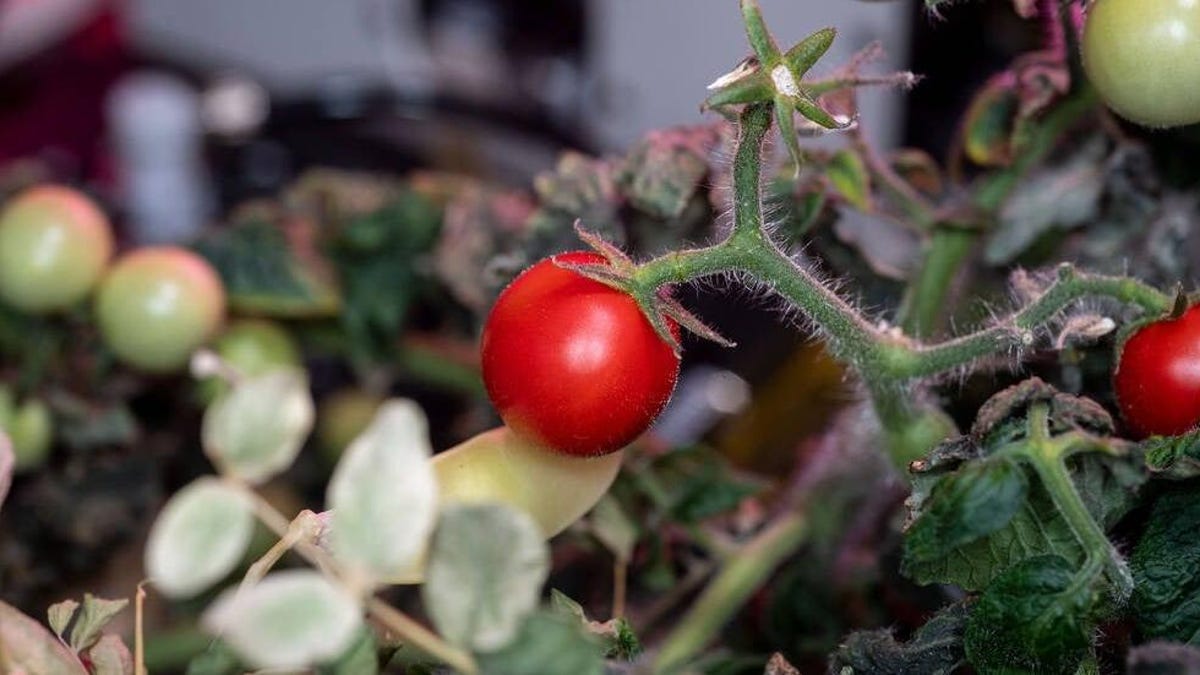The curious case of the conspicuously absent cherry tomato has finally been put to rest eight months after the lab-grown edible went missing.
Zillow Says You’ll Buy Your Next House With… AI? | AI Unlocked
In space, no one can hear a tomato scream, even when it’s lost. NASA’s Veg-05 experiment, a project focusing on growing fruits and vegetables in space, experienced an unusual turn of events when a Red Robin dwarf tomato vanished shortly after being harvested in March. This tomato, part of a study to explore the feasibility of continuous fresh-food production in space, was finally found, NASA astronaut Jasmin Moghbeli revealed during a livestream on December 6.
The resolution of this culinary cosmic mystery came during the 25th-anniversary celebration of the ISS. Moghbeli, flashing a big grin, announced, “Our good friend Frank Rubio, who headed home [on September 27], has been blamed for quite a while for eating the tomato. But we can exonerate him. We found the tomato.”
NASA astronaut Frank Rubio attending to his crops on the ISS.Photo: NASA
The Veg-05 project expanded the scope of in-space farming to include dwarf tomatoes, exploring how lighting and fertilizer variations influence fruit growth, safety, and nutritional value (and yes, tomatoes are fruits, not vegetables). This research also examines how fresh produce can positively impact the crew’s taste preferences and overall mental health in the unique environment of space. Following the harvest in March, each astronaut received a tomato sample stored in a Ziploc bag. However, concerns about potential fungal contamination led NASA to instruct the astronauts not to consume the fruit, as Space.com reported.
News of the missing tomato first emerged on September 13, during an event commemorating Rubio’s one-year stay in orbit. Rubio, who had an extended mission on the ISS due to a malfunctioning Russian Soyuz spacecraft, lamented the loss of his tomato share, which had floated away before he could take a bite. Rubio, who spent a record 371 days in space, mused about the missing tomato, saying: “I spent so many hours looking for that thing. I’m sure the desiccated tomato will show up at some point and vindicate me, years in the future.”
In October, Rubio, after returning to Earth, speculated about the tomato’s fate, suggesting it likely shriveled up due to the station’s low humidity and might have been inadvertently discarded.
It may sound weird that something like a tomato could go missing on the ISS, but the orbital lab, with all its plentiful nooks and crannies, provides ample places for an errant tomato to hide. Rubio can now breathe a sigh of relief as the mystery is finally resolved, proving that even in space, some things can still play a surprising game of hide and seek.
For more spaceflight in your life, follow us on X (formerly Twitter) and bookmark Gizmodo’s dedicated Spaceflight page.
